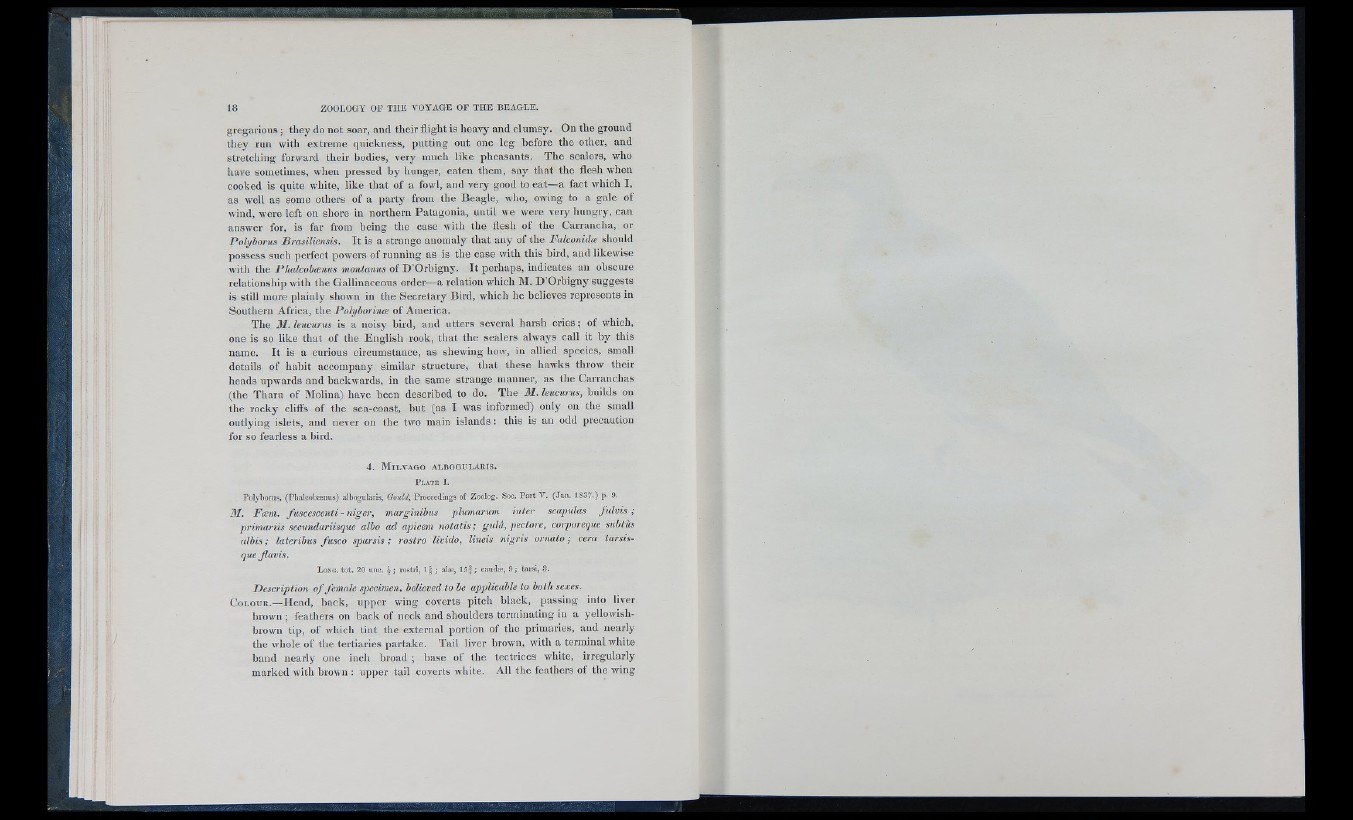
n
gregarious ; they do not soar, and their flight is heavy and clumsy. On the ground
they run with extreme quickness, putting out one leg before the other, and
stretching forward their bodies, very much like pheasants. The sealers, who
have sometimes, when pressed by hunger, eaten them, say that the flesh when
cooked is quite white, like that of a fowl, and very good to eat—a fact which I,
as well as some others of a party from the Beagle, who, owing to a gale of
wind, were left on shore in northern Patagonia, until we were very hungry, can
answer for, is far from being the case with the flesh of the Carranclia, or
Polyhorus Brasiliensis. It is a strange anomaly that any of the Falconidoe should
possess such perfect powers of running as is the case with this bird, and likewise
with the Phalcohoenus montanus of D'Orbigny. It perhaps, indicates an obscure
relationship with the Gallinaceous order—a relation wliich M. D'Orbigny suggests
is still more plainly shown in the Secretary Bird, which he believes represents in
Southern Africa, the Polyhorinoe of America.
The 31. leuairus is a noisy bird, and utters several harsh cries ; of which,
one is so like that of the English rook, that the sealers always call it by this
name. It is a curious circumstance, as shewing how, in allied species, small
details of habit accompany similar structure, that these hawks throw their
heads upwards and backwards, in the same strange manner, as the Carranchas
(the Tharu of Molina) have been described to do. The 31. leucurus, builds on
the rocky cliffs of the sea-coast, but (as I was informed) only on the small
outlying islets, and never on the two main islands ; this is an odd pi’ecaution
for so fearless a bird.
4 . M i l v a g o a l b o g u l a r i s .
P late I.
Polyborus, (Phalcobænus) albogularis, Gould, Proceedings of Zoolog. Soc. P art V. (Jan. 1837.) p. 9.
31. Foem. fuscesceuti - niger, marginihus plumarum inter scapulas fulvis ;
primariis secuytdariisqiie alho ad apicem notatis; guU, pectore, corporeque sîihtùs
albis ; lateribus fusco sparsis ; rostro livido, lineis nigris ornato ; cera tarsis-
que Jiavis.
Long. tot. 20 une. ^ ; rostri, ; aloe, 15f ; caudæ, 9 j tarsi, 3.
Description of female specimen, believed to be applicable to both sexes.
C o l o u r .—Head, back, upper wing coverts pitch black, passing into liver
brown ; feathers on back of neck and shoulders terminating in a yellowish-
brown tip, of which tint the external portion of the primaries, and nearly
the whole of the tertiaries partake. Tail liver brown, witli a terminal white
band nearly one inch broad ; base of the tectrices white, irregularly
marked with brown : upper tail coverts white. All the feathers of the wing